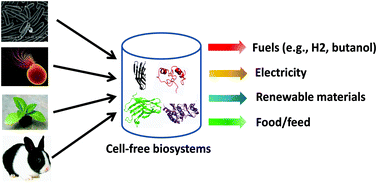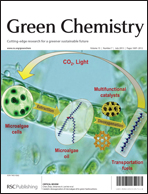Cost-efficient production of sustainably-derived biochemicals and biofuels is a critical goal of modern biotechnology. The current predominant biotransformation method is mainly based on microbial fermentation, but this system suffers from a mismatch of engineering and cellular objectives, appropriates a significant fraction of substrate/energy sources for self-replication, and poses significant scaling challenges. Cell-free biosystems for biomanufacturing (CFB2)—complex, cell-free systems that catalyze the conversion of renewable substrates to a variety of products—are emerging as an alternative to fermentation. Within this burgeoning field, a new application is the production of low-value and high-impact biocommodities by CFB2. In this subset, synthetic enzymatic networks are capable of producing numerous desired biocommodities, with the advantages of higher product yields, faster reaction rates, and reduced interference from toxic compounds, among others. In this review, CFB2, with an emphasis on biocommodities production, is compared with microbial fermentation; current applications are presented, illustrating some of the advantages of the system; and remaining challenges are discussed with the path forward for each.

You have access to this article
 Please wait while we load your content...
Something went wrong. Try again?
Please wait while we load your content...
Something went wrong. Try again?


 Please wait while we load your content...
Please wait while we load your content...